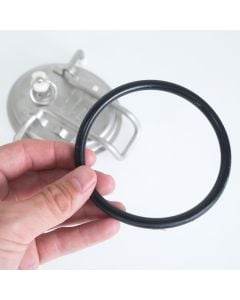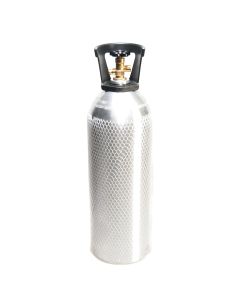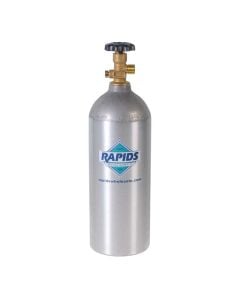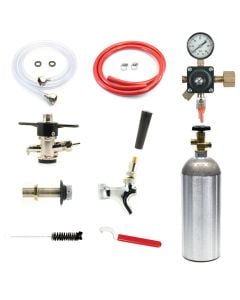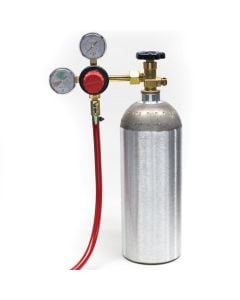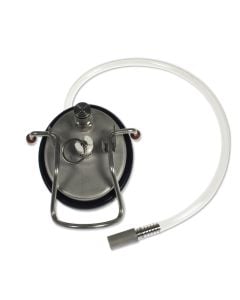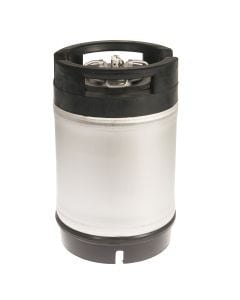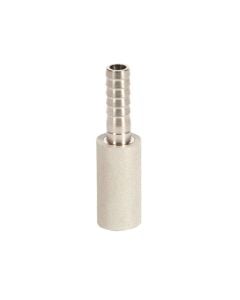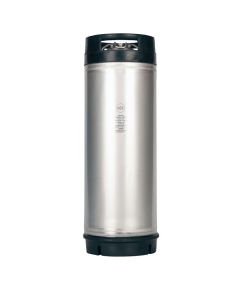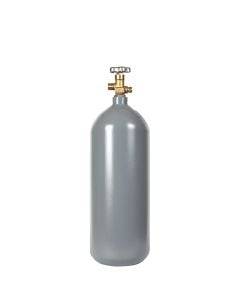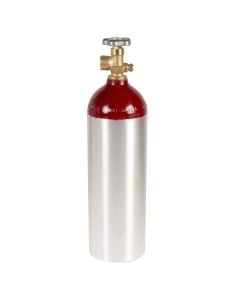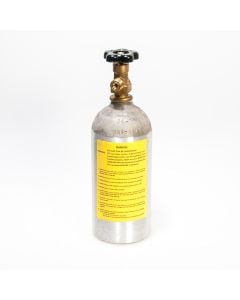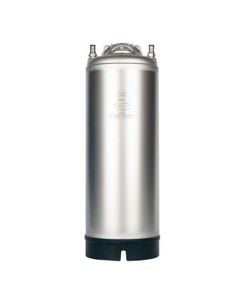Tapping & Conversion Kits
With our keg conversion kits and other kegerator supplies available here at Rapids Wholesale, you can build your own kegerator using a standard home refrigerator. We have all the kegerator supplies that you will ever need for an excellent do-it-yourself home kegerator.
-
20 lb Empty Refillable CO2 Gas Tank for Beer DispensingSpecial Price $173.99 Regular Price $219.91
-
5 lb Aluminum CO2 Cylinder for Beer Dispensing SystemsSpecial Price $69.99 Regular Price $100.35
What Is a Kegerator?
Before you start to build your own kegerator, a short background on the device is in order. A kegerator, basically, is a residential draft-beer dispensing device, typically a refrigerated container where a keg of beer is stored to keep the beer chilled. Of course, the user should also be able to easily dispense the chilled beer into a mug or glass through a beer tap.
The most common parts of a kegerator include the following: CO2 tank, regulator, coupler, beer and air line, tap, drip tray, faucet, faucet handle, and tower (for tower-conversion kegerator types).
How to Build a Kegerator with Rapid's Keg Conversion Kits
How to make a kegerator? Perhaps you've asked yourself that question and are daunted by the prospect of creating your own home kegerator. You don't need to worry - with Rapids Wholesale's keg conversion kits, any home refrigerator to kegerator conversion is easy and hassle-free.
If you are just starting out with a plain home refrigerator, you might want to check out our deluxe kegerator conversion kits. Our do-it-yourself, deluxe keg conversion kits have everything you need for kegerator conversion of any ideal home refrigerator, and they also come with either a single gauge or a dual gauge regulator.
So how to build a kegerator with Rapids keg conversion kits? Just follow these simple steps: First, decide on a donor refrigerator to use, and remove all the shelving from the interior. Then, measure and mark off where you would like to place the beer-tap faucet (note that 48 inches from the ground is the ideal pouring height for beer). Then, using a drill bit, proceed to drill a hole all the way through the door, attach and secure the beer shank into the hole in the door, install the beer tap and handle in the shank, and then attach the washer to the beer shank. You can now connect the other end of the beer-line hose and then attach it to the top of the keg coupler.
Next, install the drip-tray holder a few inches directly below the beer tap by using a drill bit; after this, you can already attach the CO2 line to the CO2 regulator and also attach the regulator to the CO2 cylinder. Lastly, position the beer keg and CO2 cylinder inside the fridge, attach the keg coupler, engage the probe, and then open the CO2 cylinder and regulator valve to pressurize your beer system. Your kegerator is ready! You can now pour chilled beer onto a mug or glass, and enjoy or serve to your customers.
Why You Should Make Your Own Kegerator
So you've already decided to build a kegerator? You will be glad to know that any bar or home kegerator has cost benefits that make it a viable choice, regardless of whether it's for personal use or for business. For instance, a beer keg helps you save up to 60 percent on costs compared to the same amount of volume packaged in cans and bottles. Depending on the brand of beer, cost savings can even be greater. Note that more specialized craft beers can usually provide significantly higher savings than common beer brands.
Aside from our deluxe keg conversion kits, you might also want to check out our basic conversion kit, super keg conversion kit, Rapids beer dispenser CO2 kit, and accessories such as aluminum CO2 cylinders, bulk tanks, CO2 quick disconnects, and more.
Lastly, please note that our deluxe keg conversion kits already include cleaning kits for effective beer-line cleaning.
The History of Beer & Home Brewing
Before home brew stores came about, offering easy-to-use kits and supplies for those interested in brewing beer at home, producing beer or ale dated back to at least the fifth millennium BC in ancient Egypt and Mesopotamia. As such, beer or ale is considered one of the oldest beverage humans have ever produced. This is because almost any cereal containing sugars can be subjected to spontaneous fermentation with the help of wild yeasts in the air, which means ale-like beverages have been developed throughout the world as soon as cereal was domesticated.
Early beers developed thousands of years ago were a far cry from the beers produced today with the help of brewing equipment. Those beers were often thicker and had bitter solids left over as a a result of fermentation. Nevertheless, even then beer was already one of the most common beverages and was consumed by everyone across different social classes.
Nowadays, modern breweries produce many different types of brew ranging from lagers, dark beers, wheat beers, stouts, and more. Today, in fact, the brewing industry is a huge worldwide business involving multinational companies, and many other smaller brewers.
Of course, there are also those who prefer brewing beer at home, and this is where home brewing supplies, home brew kits, and equipment for home brewing come in.
Home brewing is the small-scale creation or brewing of beverages through fermentation. Home brewing of beverages is mostly done by people as a hobby or for personal consumption; it is usually for noncommercial purposes. The most common beverages that are home brewed include beer, wine, sake, mead, cider, and perry. And with home brewing kits and home brew supplies readily available nowadays, brewing beer at home has never been easier.
However, home brewing has been regulated and even prohibited in certain places throughout the world. These restrictions have been lifted in several countries, among them and most recently the United States of America in 1978, and the United Kingdom and Australia in 1963 and 1972, respectively.
Nowadays, the legality of home brewing depends on a country-to-country basis; some countries, though, tend to limit the volume or amount that a certain individual can brew.
Beer Brewing Supplies and Kits
The basic principles behind home brewing beer are the same as commercial brewing: brewers produce a hopped wort and pitch yeast into the wort to stimulate fermentation. The complex process of brewing beer depends on the approach on how the beer is brewed. Generally, though, the simplest method is by using home brew kits from home brew supply stores.
Home brewing kits come in various types depending on your preference. There are brew kits that will help you produce the classic pale ales, and there are those that will help you produce creamier ales.
We at Rapids Wholesale offer beer brewing kits/sets as well as brewing equipment and supplies such as quick disconnects, conversion sets and keg conversion kits, CO2 cylinders, tapping kits, and even coil boxes.



